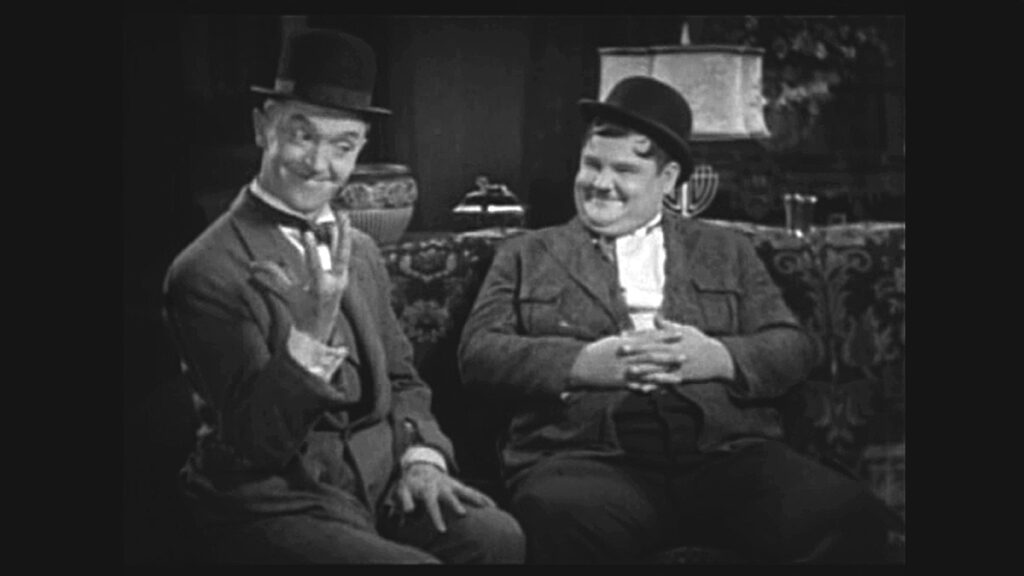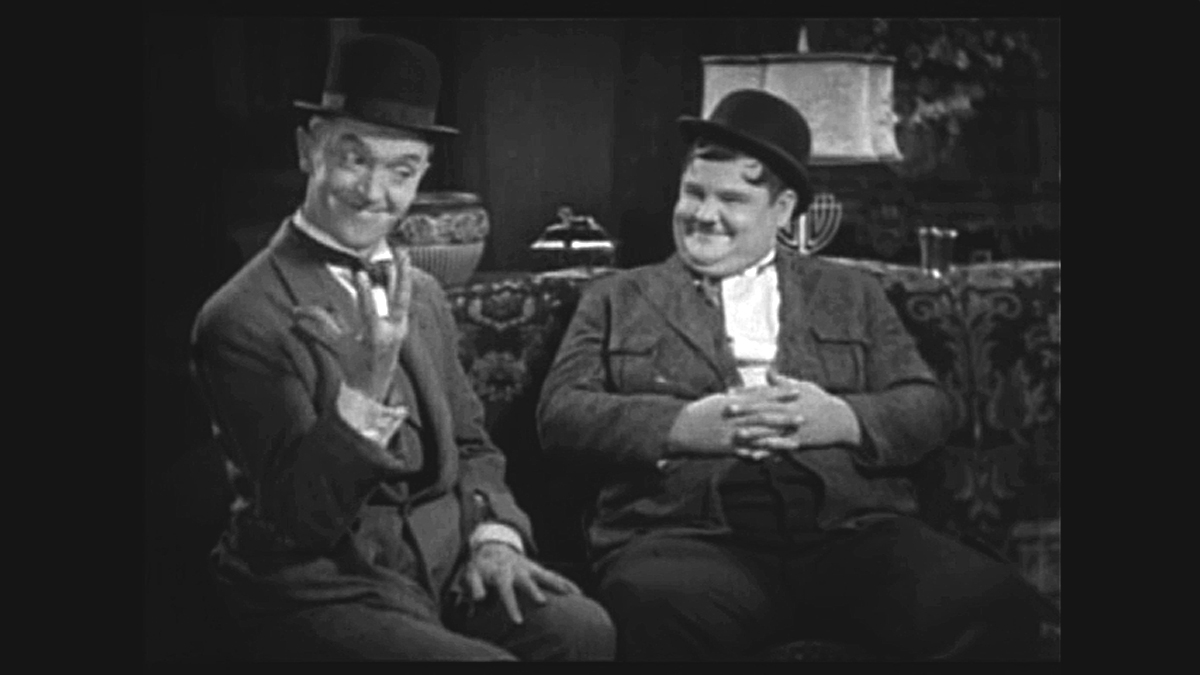The top starring comedians of silent movies were the last to give up the ghost when talking pictures brought the Silent Film universe back down to Earth. I can’t say I blame them. Physical and visual comedy was what they were known for, and they weren’t joke comics really.
Stars of dramatic films pivoted right away, and either continued or left pictures after a couple years. The game had changed, and the atmosphere on the shooting stages – now sound stages – was very different.
The stars of action movies didn’t have an easy time of it. Douglas Fairbanks gave it his best shot, having been a star of theater and on Broadway for years before entering movies. But action pictures as they were in the silent era would take some years to reconfigure to suit the new medium. Tom Mix returned to the circus for a few years before making movies again.
The leading comedians found ways to keep their physical comedy craft in use, in varying degrees, depending on which studio they were working for and how sympathetic their creative teams were to setting talk aside here and there for physical business.
Keaton did what he could or could get away with in the films he made for the MGM machine, adding falls or other sight gags where there were opportunities. Lloyd rolled up his sleeves and did his best to carry the traditions of his screen character and of physical comedy into what comedy films were becoming in the early 1930s. Harry Langdon made shorts at Hal Roach where his creative team did their best to adapt Harry to 2-reel talking comedies, with this adaptation continuing through shorts for Educational Pictures where he thankfully talked less while doing comedy business.
Laurel and Hardy had already been slowing their pacing down, so when the reality of real-time speed and synch-sound let the helium out of the balloon for comedians, Stan and Ollie were already set. One of their last silent shorts, Wrong Again (1929) – one of my favorites – has slapstick sequences, but it also has an unusual segment about 7 minutes in. Having delivered a racehorse to its rightful owner – as far as they understood things – they sit on a couch and have a conversation about the oddness of this. For a minute and a half. In a silent film.

Chaplin, of course, was Chaplin and didn’t have to give up the form if he didn’t want to. And he didn’t, making two more Silent Films after the advent of talkies. There are so many gag sequences and routines in City Lights (1931) that could never happen or work in a sound film, it’s almost as if he was shouting “Look what you’re giving up!”. I’m sure that wasn’t the case, but in City Lights Chaplin continues building on the silent cinematic progression he’d been on with The Gold Rush (1925) and The Circus (1928).
This continues with his last Silent Film, Modern Times (1936) which he interestingly used to make a statement about modern times and – remarkably – set in modern times. No one is dressed like it’s the 1920s or drives older cars, etc., in the film. I’ll get back to this point in another post a little ways down the road.
At some point in the late 1930s, though, screwball and other dialog-driven comedies have moved physical and slapstick comedy to a sort of “class clown” designation outside of the mainstream. Keaton and Langdon are in Jules-White-land at Columbia, along with Charley Chase, Stan and Babe are winding down their best work and only in feature-length, Lloyd basically retires from the screen, and Chaplin makes The Great Dictator (1939). The other comedians pop up in bit parts in features, keeping on working and paying bills.
But, again with the exception of Mr. Chaplin of course, these folks are not making Silent Films, as I’ve defined the medium in these posts. These comedians are doing non-verbal sight gags and physical business in the midst of the talking comedies they’re in. They are making sound movies with silent bits or routines in them. Silent Film is over and left behind, subjected to ridicule by the public and the critics and the industry as a cinematic and cultural antique.
Interestingly, I think, so is the notion of silent comedian or star comedian as auteur.
It would be another ten years before nonverbal and physical comedy would return to the screen in any sort of important way.
The first post in this series is here.
The previous post (#58) to this one is here.
The next post (#60) is here.

As always, fascinating – I’d not thought about that sequence in Wrong Again before… I’ll be watching it again after reading this.
I am by no means, expert on silent films. Question, what silent comedians, beside Chaplin, did sound movies without talking? I know Raymond Griffith is one.
Well, Keaton and Langdon and L&H would have gag sequences where they didn’t have dialog. Griffith actually does talk in the sound shorts he made, playing a man with a terrible head cold that forces him to talk in a hoarse whisper.